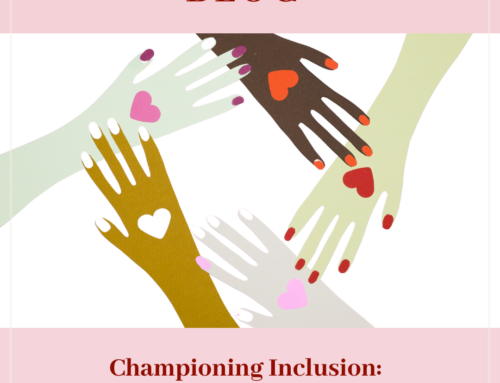When Osler released their 2025 Diversity Disclosure Practices report this week, the results were stark. According to their analysis, momentum towards gender parity on the boards of Canadian public companies slowed considerably in 2025.
Although the overall percentage of women on TSX-listed boards has officially exceeded 30% —reaching 30.5% —this number represents only a modest increase from Osler’s 2024 report.
The bottom line? Progress in increasing diversity among directors has slowed down.
The Alarming Slowdown in the Numbers
As an advocate who has spent the past 10 years working to increase the number of women in the boardroom, I closely track the data. Since mandated gender diversity disclosure for TSX-listed companies began in 2014, we have seen the proportion of women on the boards of public companies grow steadily each year. For those who believe in the importance of diversity among directors, we viewed this decade-long trend as a positive sign that gender parity was approaching.
However, this year’s numbers indicate the slowdown of that progress. The evidence is clear.
Lowest Rate of Growth Since Reporting Began
The percentage of women on TSX boards rose by just 0.7 percentage points in 2025. This represents the smallest annual increase since reporting began 11 years ago and is about half of the 1.3 percentage point growth recorded the previous year.
Appointment Rate Declined
Most notably, the proportion of new or vacant board seats filled by women continued its downward trend, dropping significantly to 31.9% in 2025. This represents a sharp decline from 40.4% in 2024 and the peak of 45.3% in 2023.
Regressions from Largest Companies
The overall rise in women on Canadian boards was entirely due to companies outside the S&P/TSX Composite Index. This year, Canada’s largest companies—those within the S&P/TSX 60 and S&P/TSX Composite indices—saw a slight dip in women’s board representation for the first time since reporting began.
Likely Causes of the Slowdown
What led to this sharp slowdown? Osler’s report attributes it to a mix of factors, including geopolitical issues and deep-rooted cultural barriers within corporate Canada.
The US Chill: Political Headwinds and DEI Retreat
One significant factor is the quickly evolving regulatory and political landscape, particularly in the United States, which has created new challenges for diversity-related initiatives globally.
Reframing Communications: Following executive orders related to DEI programs in the US, many companies—especially those that are dual-listed or operate significantly in the US—began taking steps to reduce or reframe their communications regarding DEI.
Investor Policy Shifts: U.S. political pressure prompted some institutional investors, such as BlackRock and Vanguard, and proxy advisory firms to adjust their voting guidelines regarding specific diversity targets. While ISS and Glass Lewis maintained their existing diversity policies for Canadian companies, the overall global environment became less favourable for sustained rapid progress.
Canadian Regulatory Pause: In Canada, the Canadian Securities Administrators (CSA) acknowledged this shift by pausing their work on amendments to existing diversity-related disclosure requirements, stating the move was intended to give Canadian markets time to adjust to global developments.
The Sticking Points: The “Merit” Myth and Disclosure Fatigue
Beyond external pressures, Osler’s report highlights two key internal issues: a widespread focus on the “merit myth” at the expense of diversity objectives, and a troubling decline in transparency.
The Fear of Compromising Merit: When companies justify not setting targets or policies for women directors or executive officers, they most often cite concerns that it could undermine their focus on merit. Although this trade-off is widely considered a myth, the perceived conflict between diversity and selecting the “best candidate” remains a significant barrier preventing many TSX-listed companies from adopting targets.
The Retreat in Disclosure: The uncertain environment has led to a retreat from transparency. The stability previously seen in companies reporting key diversity data points has now declined.
Overall, fewer issuers reported on specific diversity data points this year.
The proportion of issuers reporting on whether they considered the representation of women in executive officer appointments decreased sharply by approximately 7.9% compared to mid-year 2024.
Declines were also observed in the percentage of companies reporting whether they have a written policy on appointing women to boards (down 5.4%) and on having a general board diversity policy (down 4%).
For diversity beyond gender, including visible minorities, Indigenous Peoples, and persons with disabilities, voluntary supplemental disclosure declined, resulting in a decrease in data regarding these groups being reported.
Looking Forward: Diversity as a Strategic Imperative
Despite slow progress, the data on diversity is clear. Companies with more inclusive boards and executive leadership make better decisions and achieve greater business success. When women are at the table, companies benefit from unique perspectives that challenge assumptions, broaden strategies, and lead to stronger, more sustainable outcomes.
I founded Women Get On Board Inc. (WGOB) in 2015 to connect, promote, and empower more women to access corporate board seats. As we celebrate our 10th anniversary this year, it is clear our work has never been more important than it is now, at this pivotal moment.
Indeed, Osler’s report shows that the decline in new appointments of women at top companies might partly be because many have already reached their initial targets, often 30%. To continue making progress, companies must stop seeing diversity as just a checkbox and instead treat inclusive governance as a strategic necessity linked to long-term planning, stakeholder-centred values, and ethical leadership.
At WGOB, we view the slowing progress towards gender parity as a call to action. We commit to increasing our efforts, expanding our community of advocates and allies, aiming for more ambitious targets, and empowering the next generation of women leaders. We continue to believe in The Power of Three: one woman on a board is a token, two is a presence, and three is a voice.
As we enter the next decade, rapid progress will rely on companies increasing transparency through full disclosure, dispelling the belief that diversity undermines merit, and building stronger pipelines of capable, diverse senior leaders.





Leave A Comment